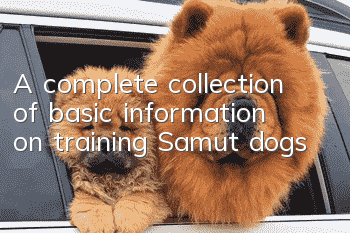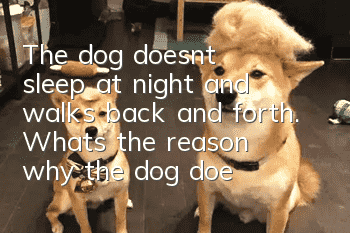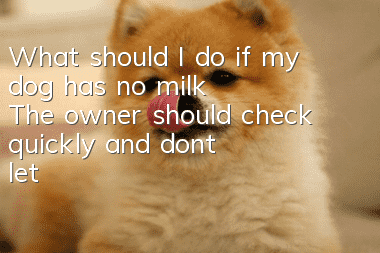A complete collection of basic information on training Samut dogs

Today I would like to share with you some basic information on training Scottish Shepherds collected by experts. It cannot be said that the experts are just the experience of Su Mu’s ultimate fans. Some of the following information refers to "Su Mu" as "puppy".
Su Mu’s simple obedience training-dogs enjoy pleasing their owners, and they are happy to obey. Training it to obey is to make it easier to live under human standards. You can start training Su Mu after he is six months old. At this time, the dog is still very playful, and we can treat training as a game and play with it.
First, let the dog remember his name. Puppies are most likely to remember concise names with only two syllables, such as "Shasha" and "Maomao". Every time you train your puppy or play with it, call its name repeatedly so that it stops and listens to you when you call it. Once you can capture your puppy's attention in this way, you can begin training him to obey a series of basic commands.
Tools for training include:
1. Training collar.
2. Better chain.
3. A rope about ten meters long.
4. Lots of patience and unstinting encouragement.
The following are some basic training:
1. Go forward and let Su Mu stick to you, shorten the chain, shout "go" and start walking first. At the same time, slap your thigh twice with the palm of your hand. If he hesitates, just pull the chain. He will squeeze his neck and have no choice but to follow.
2. Stop, sit down and shout "stop", raise the chain to make him raise his head, slap his thigh with his palm, and at the same time press Su Mu's buttocks to make him sit upright, so that he will get used to sitting down as soon as he stops.
3. Come over and put on a ten-meter rope, let the dog stay aside first, and then shout "come here", slap your legs twice, and tighten the rope (walking motion). After the dog comes over obediently, he immediately shouts "sit down" , slap your legs (same as sitting down).
4. When lying down and "lying down", at the same time, the palms of the hands are stroked backwards like a swimming freestyle, and one hand is pulling Su Mu's two front legs, and the other hand is pressing down on the top of his head.
5. To get up, you want it to prepare to move forward or come over. When you shout "get up", use your hands to pick up its abdomen near its hind legs and make it stand.
6. When the dog sits for a long time, shout "Don't move", push forward with your palms, and slowly back away, stop, and don't put your hands down. If you sit for three minutes, you will be considered qualified.
7. After lying down for a long time, when it lies down and shouts "Don't move", the same push with the palm of the hand will make the person slowly retreat and stop, but the palm of the hand is still pushed forward. You will pass after lying down for three minutes.
Training Su Mu should be done in an open field without being disturbed, so that it can concentrate on learning. Practice one movement at a time for fifteen minutes a day. After you have learned one movement, take off the chain and rope and practice again. Only teach the next movement when you are satisfied.
Remember, when Su Mu makes a mistake or doesn’t obey instructions, don’t punish him. Instead, pet him on the head as soon as he does something right.Give it a few words of praise and it will be more obedient, because encouragement is never too much.
1. Excretion training must start as early as possible, but it is also the most controversial training, which is to train the puppy to excrete outside the house. Elimination training is the best time to use positive reinforcers, that is, various food and toy rewards. In addition to rewarding your pet when it does something right to reinforce the behavior, another tip is to predict when your pet will eliminate. Dogs usually excrete after walking, eating, drinking or playing, or when you are not careful. If you want to make training effective, you must carefully observe the dog's eating and drinking situation, and set up a safe zone. , which is where Su Mu will never excrete. The most ideal safe area is the dog's kennel. If there is no dog crate at home, try to let the puppy urinate in the bathroom or laundry room.
2. Puppy obedience Using puppy obedience is an interesting topic in training. Puppies are generally not considered ready for formal training until they are six months old. However, many puppies often learn some bad behaviors before they are six months old. A puppy thought to be incapable of learning to sit still can learn to chew up every shoe it finds or jump on every guest. The misunderstanding that puppies can only learn [bad] behaviors but not [good] behaviors is the root of this contradiction. The solution lies in a thorough review of the methods used to teach puppies, rather than doubting their ability to learn.
Traditionally, dog training methods have focused on forcing the dog to "obey." Although [force] is an effective tool for punishing serious misconduct, it is done by force. Trying to get your dog to learn new behaviors doesn't work that well. This forced method tends to suppress all behaviors regardless of good or bad, not just bad ones; imposing too much training on a dog too early may lead to training failure. To avoid this situation, you should focus on using positive rewards to train correct behaviors.
3. New tools Everyone knows that when training a dog, someone must clearly tell the dog "No!" ] signal. In fact, when the dog does something right, a signal that praises the dog "is so good" is equally important. If there is no such signal, it is equivalent to forcing the dog to guess which behavior will be rewarded. This kind of trial and error method takes a lot of time before the dog accidentally guesses it correctly, and there is no reward during the trying process. Think about it: there is no reward, and it takes a long time to try to succeed; the puppy naturally chooses to give up learning, and even decides that [learning] is not worth the gain. A simple "good boy" signal can quickly make the puppy confirm that he has done the right thing, and also make him feel that the reward is not out of reach; naturally, the puppy will also like to learn more. 4. Associate the signal with the reward. The first step to make the signal "Good Su Mu" take effect is to choose a short and easy-to-recognize password. A simple example is to shorten sentences like [Good Su Mu, the puppy is so good, Mommy’s little baby] to [Good]Such a password. At the beginning, while saying "Be good", you should give the puppy something to eat. Repeat this about twenty times. Note: The order of saying "good" first and then giving food is very important; pause slightly between saying "good" and giving food. Soon, the puppy will respond to the password you choose and start to expect you to give it a reward. In other words, you have successfully created the password "good". Now you have a powerful tool that can quickly tell your dog that he did something right.
5. Use objects. Most puppies will resist unhappily when they are forced to sit down. A better approach is to trigger the dog's instinct to follow the target. When a person holds some food and puts it in the puppy's nose, it will naturally turn its head as the food moves; if the food moves away, the dog will stand up and follow the food forward. We can try this method to train the puppy to "sit down", and we will discover the advantages of this method.
First of all, find a piece of food that your puppy likes to eat and is of a suitable size. Remember, don’t choose a dog biscuit that is too hard or something that is too chewy. Because the dog may spend a lot of time chewing the prize hard, making the training progress too slow. Sit in front of the puppy and place the food between its nose and forehead. Don't move the food too quickly so that your puppy can't find it. Also, don't lift the food above the dog's head, otherwise the dog may try to stand up on its hind feet instead of sitting down.
If the puppy wants to jump on you or pounce on the food, say to it in a normal tone: "Wrong" and take the food back quickly. If you are lucky, the puppy will naturally lean back following the food and sit down. As soon as it sits down, say "Good" to it and then give it food. Don't be discouraged if your dog doesn't sit down; some puppies will naturally back away or even stand up to get to the treat. Generally speaking, when trying to train a dog to do a certain action for the first time, if the puppy does not do the complete set of actions, try to let it do part of the action.
Take training Su Mu to sit down as an example. If its hind legs relax when you lift the food above its nose, you should praise it for being "good" and give it the food. Continue this kind of training and try to let Su Mu's hind legs relax more each time. If this continues, the dog will slowly learn to sit down. Try not to lose patience, or press your puppy's back to get him to sit. The significance of this training method is to induce the puppy to learn with [rewards] rather than forcing the puppy. If you are successful in getting your puppy to sit every time, you can move on to the next step in training.
Follow the following steps and you will get surprising results in no time:
1. Say "Sit down" to the puppy
2. Move the food in front of its forehead (the puppy should sit down at this time)
3. Praise it [so good]
- Dog’s anal gland odor, please note that this is a sign of your dog’s health!
- How to make your dog like to eat dog food Four ways to make your dog fall in love with dog food
- How to protect your dog’s food? Teach you tips on training your dog
- Why do dogs defecate everywhere? How can dogs stop defecating everywhere?
- What should I do if my dog has lupus? Immune system diseases should not be underestimated
- If your dog's hair is cut and the skin is cut, the flesh is exposed. If the dog's hair is accidentally cut and the skin is cut, it must be disinfected immediately.
- Do dogs need deworming in summer? What should you pay attention to when raising dogs in summer?
- What to do if your dog has indigestion? Dog indigestion is no small matter!
- What should you pay attention to when vaccinating your dog? What should you pay attention to when vaccinating your dog?
- Symptoms of Rheumatism in Dogs What conditions can cause rheumatism in dogs?



